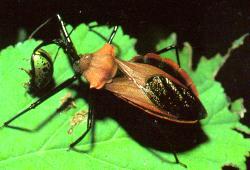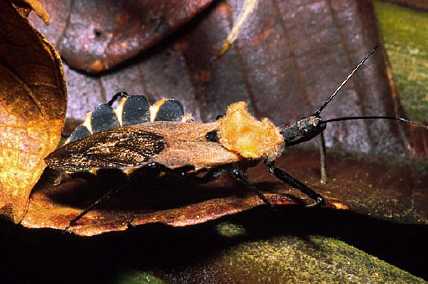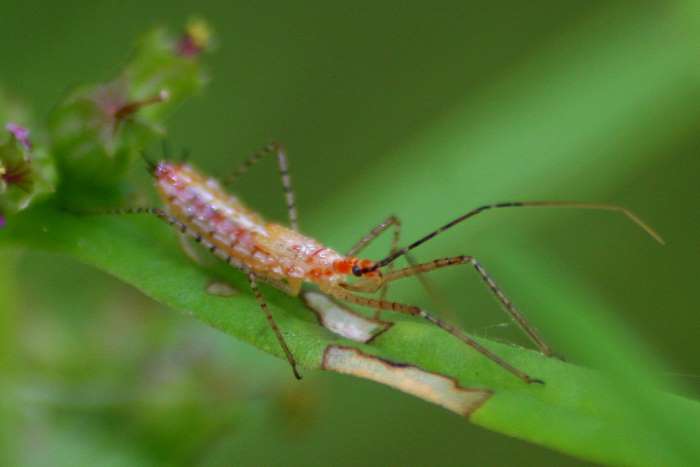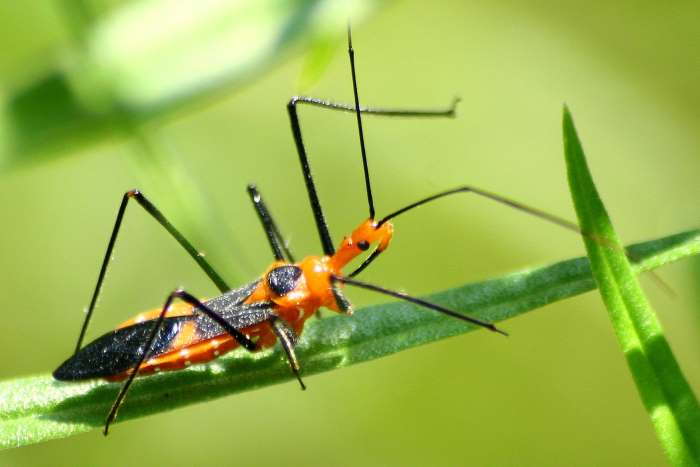ASSASSIN BUG |
||
| Bug Index |
This vicious-looking bug kills many garden pests including flies, mosquitoes, beetles and large caterpillars. It benefits people because it eats many non-beneficial insects that are pests to farmers and gardeners. Assassin bugs lie in wait for insects and then stab the prey with their proboscis (the beak) and inject a toxin that dissolves tissue. The assassin bug then sucks up the other bug's tissues. Assassin bugs attack quickly and paralyze their prey. This is how they got their name. Sometimes, when other food isn't available, assassin bugs even eat each other. The females may be the better "assassins" because they need protein to produce their eggs, so they eat more than the males. Assassin bugs often bite humans when they are captured. The Assassin Bug's bite is very painful and can make humans sick. Some people are very allergic to them and have a severe reaction to their bite. Assassin bugs are aggressive and not afraid to attack creatures much larger than itself. They are sometimes called "kissing bugs" because they often bite people near the mouth and on their face. Assassin Bugs can also transmit diseases to humans and animals. People can get Chaga's disease from being bitten by Assassin Bugs and there is no good treatment for it. Even though they have nasty bites, remember that Assassin Bugs are important beneficial bugs because they help to balance and control the insect populations that destroy food crops and forest plants. Many species of Assassin bugs live North America, but these bugs actually live all over the world. They live in Europe, Africa, North America, Central America, South America, and parts of Asia. Assassin Bugs live in a variety of habitats including rainforests. In fact, they are very important bugs in the rainforest because they kill other insects that destroy the forests. In North America, Assassin Bugs live in cities and in forests, in fields and near lakes. Some kinds of assassin bugs live in people's homes, where they like to be around bathtubs, sinks, and drains.
Adults measure ½ to 1 inch long
(13 to 25 mm), and have a cone-shaped head and wide
curving beak.Like all insects, they have 6 jointed legs, two antennae, and an exoskeleton made of chitin (a material that also forms our hair and
fingernails). Their three-part body consists of a head (with the mouthparts, eyes, and antennae), thorax (where the legs and wings
attach), and the abdomen (with the reproductive, and most digestive organs). Females lay eggs in cracks, under rocks or in other sheltered spots in summer, and
these eggs reach adult size around the following June. There is only one generation
of Assassin bugs per year.
|
|



